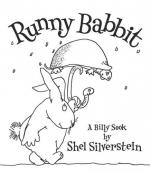CHAPTER VII
I
He solemnly finished the last copy of the American Magazine, while his wife sighed, laid away her darning, and looked enviously at the lingerie designs in a women’s magazine. The room was very still.
It was a room which observed the best Floral Heights standards. The gray walls were divided into artificial paneling by strips of white-enameled pine. From the Babbitts’ former house had come two much-carved rocking-chairs, but the other chairs were new, very deep and restful, upholstered in blue and gold-striped velvet. A blue velvet davenport faced the fireplace, and behind it was a cherrywood table and a tall piano-lamp with a shade of golden silk. (Two out of every three houses in Floral Heights had before the fireplace a davenport, a mahogany table real or imitation, and a piano-lamp or a reading-lamp with a shade of yellow or rose silk.)
On the table was a runner of gold-threaded Chinese fabric, four magazines, a silver box containing cigarette-crumbs, and three “gift-books”—large, expensive editions of fairy-tales illustrated by English artists and as yet unread by any Babbitt save Tinka.
In a corner by the front windows was a large cabinet Victrola. (Eight out of every nine Floral Heights houses had a cabinet phonograph.)
Among the pictures, hung in the exact center of each gray panel, were a red and black imitation English hunting-print, an anemic imitation boudoir-print with a French caption of whose morality Babbitt had always been rather suspicious, and a “hand-colored” photograph of a Colonial room—rag rug, maiden spinning, cat demure before a white fireplace. (Nineteen out of every twenty houses in Floral Heights had either a hunting-print, a Madame Feit la Toilette print, a colored photograph of a New England house, a photograph of a Rocky Mountain, or all four.)
It was a room as superior in comfort to the “parlor” of Babbitt’s boyhood as his motor was superior to his father’s buggy. Though there was nothing in the room that was interesting, there was nothing that was offensive. It was as neat, and as negative, as a block of artificial ice. The fireplace was unsoftened by downy ashes or by sooty brick; the brass fire-irons were of immaculate polish; and the grenadier andirons were like samples in a shop, desolate, unwanted, lifeless things of commerce.
Against the wall was a piano, with another piano-lamp, but no one used it save Tinka. The hard briskness of the phonograph contented them; their store of jazz records made them feel wealthy and cultured; and all they knew of creating music was the nice adjustment of a bamboo needle. The books on the table were unspotted and laid in rigid parallels; not one corner of the carpet-rug was curled; and nowhere was there a hockey-stick, a torn picture-book, an old cap, or a gregarious and disorganizing dog.




